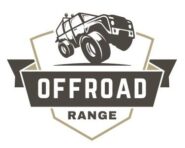As any lifelong ATV rider knows, there are few things more frustrating than dealing with unexpected problems on the trail. Just when you think you’re primed for an epic ride through the backcountry, your machine starts acting up. But have no fear – if you happen to be wheeling a CFMoto CForce 800, there’s a good chance any issues you encounter are common and have straightforward solutions.
As the owner of two CForce 800s myself, I’ve gotten intimately familiar with the machine’s tendencies, both good and bad.
In this post, I’ll outline some of the most prevalent problems CFMoto motorcycle owners face with their CForce 800, along with some fixes to get back up and ride as quickly as possible.
CFMoto CForce 800 Problems


- Electrical Issues
As an experienced ATV rider, you know that electrical issues can be frustrating to diagnose and repair. The CFMoto CForce 800 is no exception when it comes to potential electrical gremlins. One common problem is issues with the electronic control unit (ECU). This is essentially the ATV’s computer that controls engine management and other electronic components. Faulty ECUs can cause poor engine performance, trouble starting, stalling, and other drivability problems. Replacing the ECU may be necessary if it cannot be reprogrammed.
You may also encounter faulty sensors or wiring harness problems on your CForce 800. Sensors provide critical data to the ECU to regulate things like fuel delivery, spark timing, and emissions. Bad sensor readings will confuse the ECU, leading to all sorts of performance and drivability problems. Carefully inspect sensor connectors and wiring for damage, corrosion, or loose connections. Replace any suspect sensors and have the wiring harness damage repaired to restore proper operation.
Your CForce’s dash display and gauges may also malfunction due to flaky electrical connections. This can cause issues like incorrect or erratic gauge readings that may leave you stranded if critical data like fuel level is incorrect. Thoroughly inspect all wiring and connections to the dash display and individual gauges. Repair any corroded or loose connectors and replace damaged wiring to get your dash and gauges working properly again.
- Build Quality
Some CForce 800 owners have reported issues with loose bolts or fasteners coming loose over time. This can lead to critical parts rattling, wearing prematurely, or even falling off entirely in severe cases.
When doing routine maintenance, be sure to check the tightness of all bolts and fasteners. Use a torque wrench to tighten any loose hardware to the proper specs. You’ll also want to periodically inspect parts like ball joints, tie rods, and other wear items that are known failure points on ATVs.
Replace any components that show excessive wear before they fail. Paying close attention to build quality and component wear can help you avoid being stranded due to something shaking loose on your CForce.
- Engine and Performance
Getting your ATV engine to start and run properly is key to a good ride. Some CForce 800 owners report difficulties starting their engines, especially in cold weather. This can often be remedied by fresh fuel, a charged battery, and checking all electrical connections. But other times it may require servicing the starter or fuel delivery components if worn or damaged.
Once running, the CForce 800 may exhibit inconsistent idle speeds or stalling, especially when cold. The engine may not be getting the proper fuel/air mixture due to dirty carburetors or faulty sensors. Carefully cleaning the carburetors and intake tract along with checking sensor operation can typically resolve idle and stalling problems.
These machines are known to occasionally overheat in demanding conditions like climbing hills in high heat. Improper coolant levels, damaged radiators, or clogged air intake can cause overheating issues. Monitor engine temps closely and pull over to allow cooling if needed.
- Transmission and Drivetrain
The transmission and drivetrain take a lot of abuse on an ATV, so issues can crop up over time. Many users have been reporting problems with hard shifting or transmission slippage, especially when clutch components start to wear. Preventative maintenance like regular fluid changes and inspection of the clutches, shifter linkage, and shift detents can minimize transmission problems. If shifting issues persist, worn clutch components or damaged gear sets may need repair or replacement.
The CVT belt is another common wear item on the CForce 800 drivetrain. Premature CVT belt wear or failure can leave you stranded miles from home. Belt problems are often indicated by belt slippage under acceleration or unusual noises. Inspect the belt frequently for cracks or uneven wear and replace it proactively per the maintenance schedule. Also, check the CVT clutch engagement and drive components for binding or maladjustment which can quickly ruin a belt.
- Suspension and Handling
The suspension on your CForce 800 takes a beating from rough terrain, so issues can develop over time. There have been complaints raised in various forums that the stock suspension settings are either too soft, bottoming out easily, or too stiff, delivering a rough bone-jarring ride.
You can try adjusting the spring preload and damping to tune the suspension for your weight and riding style. But fully revalving the shocks with stiffer springs may be needed to cure excessive bottoming out.
Worn top bearings and bushings can also lead to loose, sloppy handling. Replace any damaged bearings or bushings and have a dealer set the caster and toe alignment to factory specs to restore precise handling. Periodically inspect ball joints, tie rods, and shock mounts for tightness or damage.
- Brakes
The brakes are a critical safety component on an ATV, so issues here can spell trouble. There have been several instances where the brake pads wear out quickly, sometimes in under 1,000 miles.
This premature wear is likely due to the pads not bedding in properly or getting very hot from excessive use riding in hilly terrain. Replacing the pads per the maintenance schedule and allowing proper bed-in can improve pad life. You may also encounter problems with the brake fluid or brake lines over time.
Moisture in the fluid can reduce braking performance, as can leaks in the hydraulic lines. Change the fluid as recommended and inspect the brake lines and master cylinder for any seepage or damage.
- Fuel System
Some models have had issues with premature fuel pump failure, causing the engine to stall or not start. Replacing the pump and filter restores proper fuel pressure and volume to the engine.
In older, carbureted models, owners report problems with getting the carburetors jetted properly. Symptoms include poor throttle response, hard starting, and stalling.
Carefully tuning the carburetors, adjusting the float levels, and inspecting all fuel system components for leaks or blockages can get a balky carburetor system working properly again.
- Cooling System
As ATV’s cooling system components age, problems can develop that lead to dangerous overheating. You may experience issues with radiator leaks or clogging that reduce the engine’s ability to shed heat, resulting in elevated operating temperatures.
Replacing a damaged radiator or thoroughly flushing a clogged one restores proper engine cooling.
The cooling fan is another prone to failure component. Fan malfunctions can allow engine temps to creep up, especially when idling or moving slowly on tight trails. If the fan stops working completely, urgent repair is required to avoid engine damage.
Keeping your CForce’s cooling system in top shape by fixing any leaks, flushing debris, and testing fan operation allows you to focus on riding without worrying about the engine overheating.
- Exhaust
The exhaust system on your CForce 800 takes a beating from the elements, mud, water, and rough terrain. Over time, the exhaust pipes, muffler, and other components can suffer from excessive rust and corrosion damage. This can lead to irritating exhaust leaks or even complete component failure.
Listen for any change in exhaust tone or increased noise that may indicate a new leak or break. Visually inspect the entire exhaust system periodically for rust holes, cracks, or loose joints. Repairing leaks and replacing severely corroded parts right away prevents further damage.
You may also encounter issues with cracked exhaust flanges or broken pipe hangers that allow the exhaust to rattle or blow apart entirely. Replacing damaged exhaust components and adding protective skid plates maintains a leak-free exhaust that keeps your ATV running smoothly and sounding great on the trails.
- Accessories and Attachments
Adding accessories like a winch or plow vastly expands the capabilities of your CForce 800 for the trail or work. But these add-ons also introduce more potential problems. Winches are notorious for electrical gremlins due to corroded or loose wire connections and water exposure. A non-functional winch stranding you on the trail.
Thoroughly inspect all winch wiring for damage and make watertight connections. Mechanically, winches can fail due to worn gears, fraying cables, and binding spools if not serviced regularly. Follow the manufacturer’s maintenance recommendations to keep your winch hauling reliably.
Other accessories like plows, racks, and hitches place more stress on your ATV’s frame and drivetrain. Signs like increased vibration, odd handling, or component damage indicate a problem with an accessory or its installation.
Carefully follow the manufacturer’s mounting instructions and weight limits to avoid issues. Confirm accessories are vibration-free and not stressing components before tackling big jobs.
In Summary
While the CFMoto CForce 800 can be a capable and fun ATV for recreational and utility use, it is not immune to potential issues just like any machine. Being aware of common problems reported by other owners, like electrical gremlins, performance concerns, suspension troubles, and premature part failures can help you proactively maintain and repair your CForce to maximize longevity and reliability.
Implementing strict preventative maintenance along with promptly addressing any problems is key to keeping these hard-working ATVs running optimally for years of enjoyment on the trails and worksites.


I’m Harvey, and I know everything there is to know about offroad vehicles. I’ve been driving them since I was a kid, and I love nothing more than exploring the great outdoors in my Jeep, ATV or UTV. I grew up in a small town in Idaho, and that’s where my love for offroad vehicles started. There were no paved roads where I lived, so we had to drive on dirt trails to get around. And that’s when I fell in love with the thrill of being able to go anywhere I wanted, no matter how rough the terrain was. LinkedIn | Instagram



